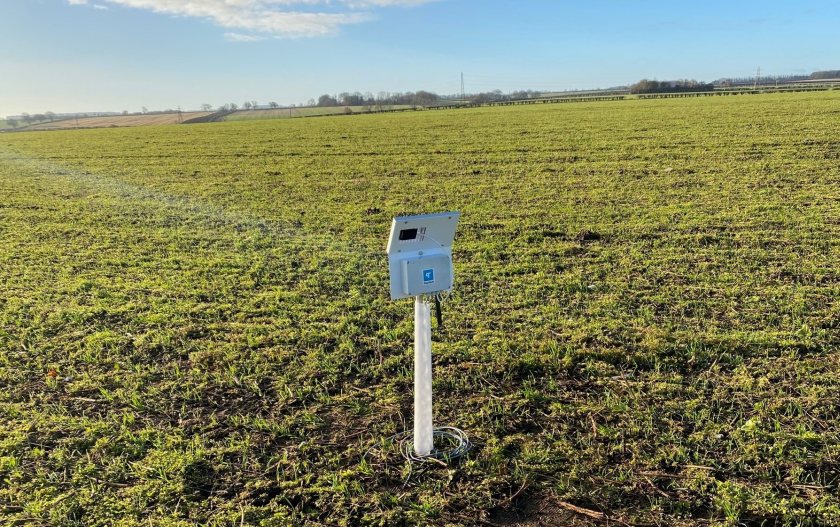
A unique soil station that is helping European farmers dramatically increase profitability by cutting fertiliser use is now being trialled at more than 20 UK farms.
The station measures nutrient movement through the soil to help growers make decisions about when to apply fertiliser to optimise nutrient uptake efficiency (NUE).
The system works by having sensors at two different depths in the soil which track the nutrients moving between them.
This can be plotted in real-time via an online dashboard which shows if the nutrients are leaching quickly away or are being held around the roots for plants to absorb.
It is currently being trialled at more than 20 locations across the UK, including the West Midlands, Herefordshire, East Anglia, Lincolnshire, and Yorkshire.
Clive Bailye, a farmer from Lichfield, Staffordshire, and winner of Soil Farmer of the Year in 2016, is one of the growers taking part in the UK trials.
He described the soil sensor as "another tool in the box to help farmers make better decisions."
“We’re all aware of variable rate fertiliser applications and we get information on the quantities we need to apply but not the timings. Having something that can help with timing is new and that really captures the imagination.
“The soil station will say ‘now is the optimum time to apply fertiliser’ or better still, it will tell you if the fertiliser you applied two weeks ago is still in the soil and you don’t need to apply more. That could save a significant amount of money.
“We made our first nitrogen application and it’s really interesting to see that going through the soil profile as you’ve got the advantage of the deep sensor too."
Brixworth Farming in Northamptonshire, another business trialling the soil sensor, supplies labour, machinery, and crop marketing solutions for 2,000 hectares of arable land.
Managing Director Ian Matts said: “What we want to do is identify the differences in both the amounts and timings of nitrogen release and availability between different previous crops and where catch crops have been utilised.
“We know, for example, there’s a big response to nitrogen following spring oats. We know this is different following beans, but not necessarily to what extent, or when. We are also keen to better understand these changes with a catch crop.
“We want to use the sensors to see if we can identify any differences between these conditions.”
Mr Matt added it was early days as the sensors had only been in the ground a couple of months, but the early signs were good.
“I think with any of these things the more information you build, the more confidence you have to really use it,” he said.
“I’m optimistic about it because it can measure nitrate movement through the soil in real time.”
Mikk Plakk, chief executive of Paul-Tech, the Estonian company behind the station, said the technology will enable British growers to "gather the most detailed picture of the health of UK soils ever created".
He said: “The technology is employed in a significant number of European countries across arable and vegetable growing operations, and is enabling farmers to get a much richer picture of how nitrogen and other nutrients move through the soil.
“Trialling the technology in the UK will provide British growers with unparalleled insights into what is going on under the surface of their fields, and will help build a national picture of soil health.”
